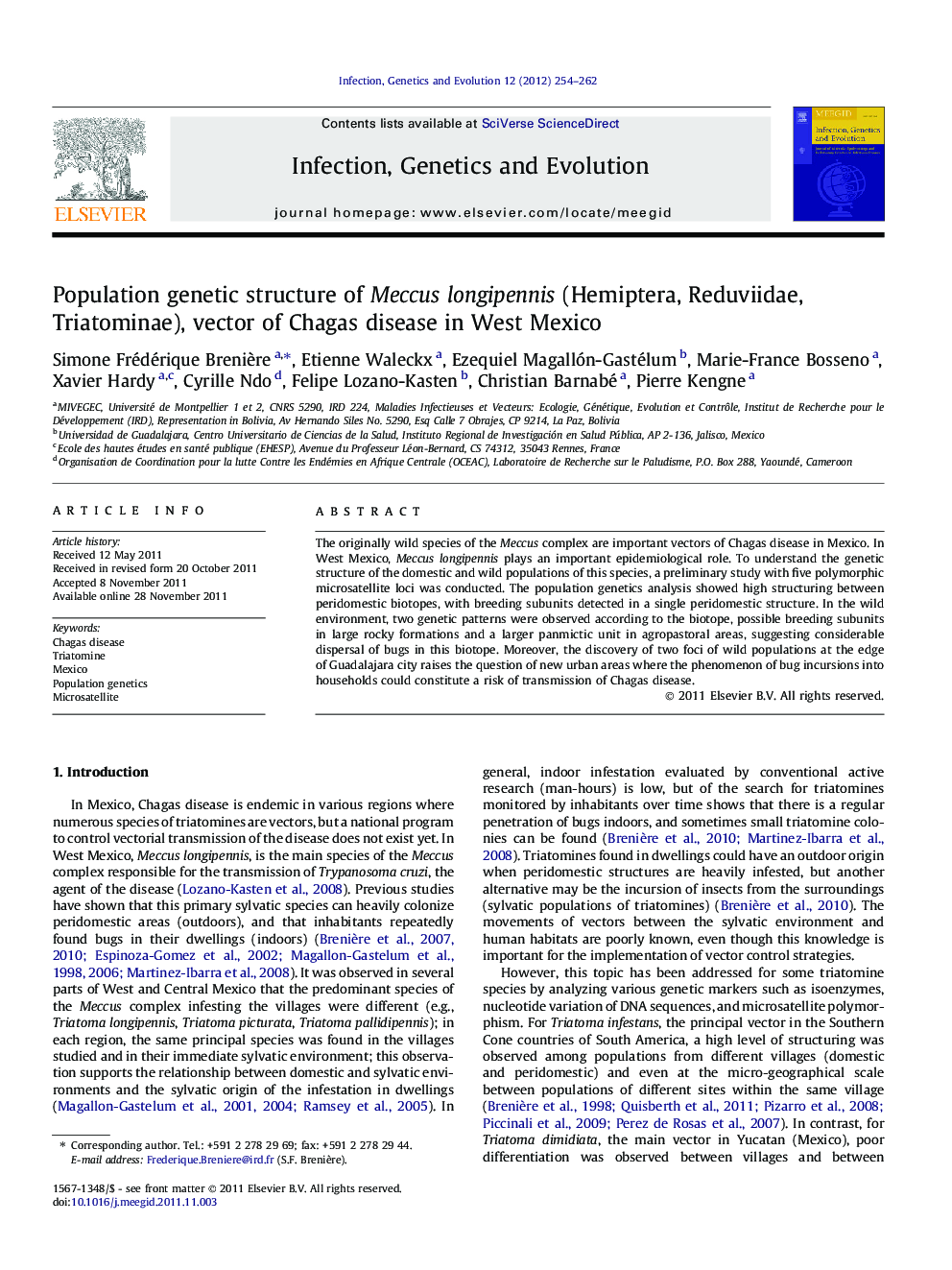| کد مقاله | کد نشریه | سال انتشار | مقاله انگلیسی | نسخه تمام متن |
|---|---|---|---|---|
| 5911464 | 1161366 | 2012 | 9 صفحه PDF | دانلود رایگان |

The originally wild species of the Meccus complex are important vectors of Chagas disease in Mexico. In West Mexico, Meccus longipennis plays an important epidemiological role. To understand the genetic structure of the domestic and wild populations of this species, a preliminary study with five polymorphic microsatellite loci was conducted. The population genetics analysis showed high structuring between peridomestic biotopes, with breeding subunits detected in a single peridomestic structure. In the wild environment, two genetic patterns were observed according to the biotope, possible breeding subunits in large rocky formations and a larger panmictic unit in agropastoral areas, suggesting considerable dispersal of bugs in this biotope. Moreover, the discovery of two foci of wild populations at the edge of Guadalajara city raises the question of new urban areas where the phenomenon of bug incursions into households could constitute a risk of transmission of Chagas disease.
⺠We analyzed the population genetic structure of an important Chagas vector in Mexico. ⺠High structuring was observed between Triatoma longipennis peridomestic populations. ⺠In agropastoral area, results suggest important dispersal of the sylvatic populations.
Journal: Infection, Genetics and Evolution - Volume 12, Issue 2, March 2012, Pages 254-262